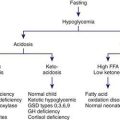Chapter 527 Toxic Nephropathy
Agents that commonly cause acute kidney injury and some of their clinical manifestations are summarized in Table 527-1. Mechanisms of injury often help to explain the presentation; multiple toxic exposures in patients with complicated clinical histories often limit the ability to clearly establish clinical cause and effect. For example, diminished urine output may be the clinical hallmark of tubular obstruction cause by agents such as methotrexate or agents that cause acute tubular necrosis such as amphotericin B or pentamidine. Alternatively, nephrogenic diabetes insipidus may be the critical clinical manifestation of agents that cause interstitial nephritis such as lithium or cisplatin. Nephrotoxicity is often reversible if the noxious agent is promptly removed.
Table 527-1 RENAL SYNDROMES PRODUCED BY NEPHROTOXINS
NEPHROTIC SYNDROME
NEPHROGENIC DIABETES INSIPIDUS
RENAL VASCULITIS
THROMBOTIC MICROANGIOPATHY
NEPHROCALCINOSIS OR NEPHROLITHIASIS
ACUTE RENAL FAILURE
OBSTRUCTIVE UROPATHY
FANCONI SYNDROME
RENAL TUBULAR ACIDOSIS
INTERSTITIAL NEPHRITIS
Aronoff GR, Berns JS, Brier ME, et al, editors. Drug prescribing in renal failure, ed 4, Philadelphia: American College of Physicians, 1999.
Braden GL, O’She M, Mulher JG. Tubulointerstitial diseases. Am J Kidney Dis. 2005;3:560-572.
Goldfarb S, McCullough PA, McDermott J, et al. Contrast-induced acute kidney injury: specialty-specific protocols for interventional radiology, diagnostic computed tomography radiology and interventional cardiology. Mayo Clin Proc. 2009;84:170-179.
Pannu N, Nadim MK. An overview of drug-induced acute kidney injury. Crit Care Med. 2008;36:S216-S223.
Patzer L. Nephrotoxicity as a cause of acute kidney injury in children. Pediatr Nephrol. 2008;23:2159-2173.





